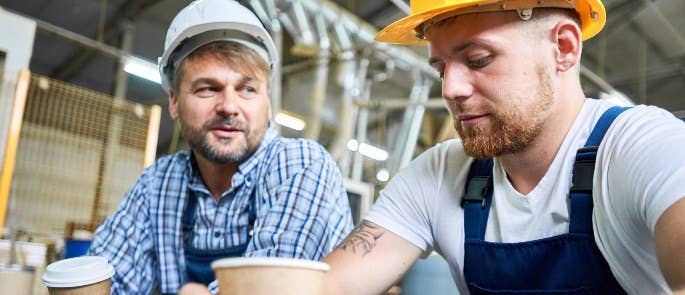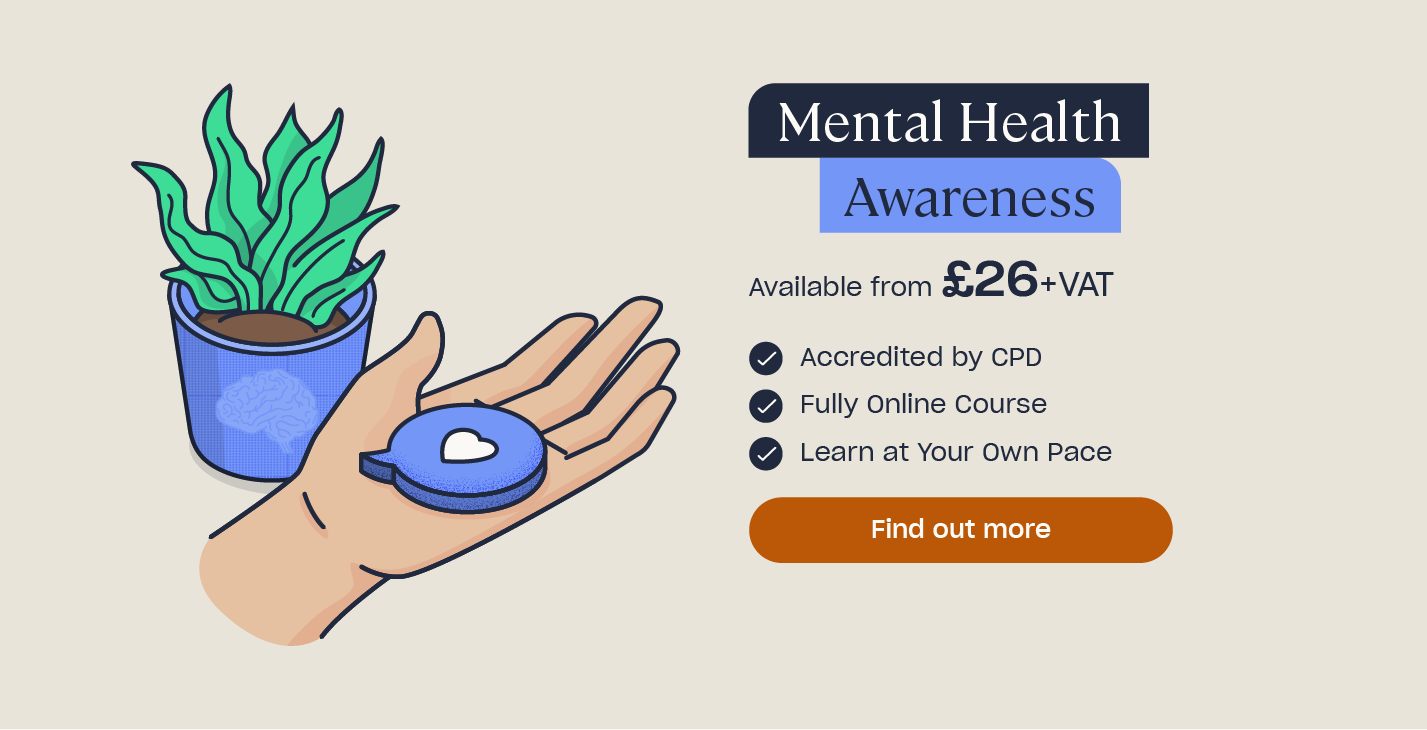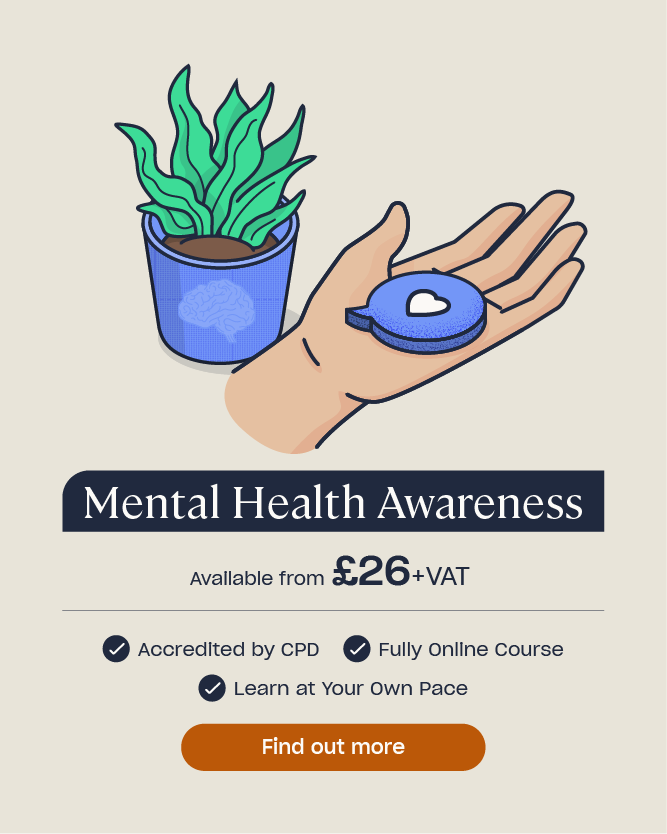Managing Occupational Health in Construction
Working in construction has many hazards, from noise and manual handling to stress and fatigue. As a result, the risk to construction workers’ health is high, with the HSE reporting that 672,000 workers suffered from a new case of work-related ill health in 2022/23.
If you’re responsible for managing occupational health in construction, then it’s essential that you know the common hazards and what you can do to prevent them. It’s also crucial that you understand the prevalence of mental ill-health across the construction industry.
What are the Occupational Health Risks in Construction?
Occupational ill health describes all health problems in the work environment. This includes health problems that workers bring to the workplace as well as health issues that are caused or made worse by work. In the construction injury, there are many hazards that can contribute to occupational ill-health. Some of these are:
- Exposure to harmful materials, including asbestos, lead, dusts containing silica, chemicals, sunlight, gases, and exhaust emissions. This can lead to skin problems, dermatitis, occupational asthma, occupational cancer, and lung disease, if they are not properly controlled.
- Frequent loud noise. In time, this may contribute to noise induced hearing loss and tinnitus.
- Excessive use of vibrating tools, which may lead to Hand Arm Vibration Syndrome and vibration white finger.
- Frequent material and manual handling of heavy loads. This may give rise to musculoskeletal disorders and upper limb disorders, particularly if you adopt incorrect manual handling procedures.
- Stress and fatigue. This can contribute to a range of mental health conditions, including depression and anxiety.
- Lone working. This presents risks such as accidents not receiving urgent assistance if nobody is nearby and if communication methods are insufficient. It may also result in accidents arising from the inability to immediately ask someone for help.
- Potential for falls from height, electric shocks, being struck by a moving vehicle, and working in a confined space. The dangers from these can range from a broken bone to death.
- Inadequate working conditions, including insufficient lighting, uncomfortable temperatures, and long working hours.
As an employer, it’s your responsibility to minimise these risks and protect your construction workers’ health.

Mental Health and the Construction Industry
Suicide is the leading cause of death for men aged 20-49. In addition to this, male construction site workers are three times more likely to commit suicide than the average UK male. Suicide kills more construction workers than falls do.
Clearly, mental health in the construction industry is something that needs our attention. Promoting good mental health in construction is just as important as promoting physical safety.
The construction industry lends itself to a challenging and stressful environment; working hours are long and demanding, the risk of injury is high, work often needs to be carried out miles from home for weeks at a time, and lone working is common. Furthermore, the 2018 collapse of Carillion only added to the sense of unease and uncertainty towards job security.
The construction industry is predominantly male, and the idea of the strong, macho man is widespread. This ‘tough guy’ image, however, makes it difficult for men to communicate their struggles for fear of ridicule and being seen as ‘weak’. The belief that construction site workers are too tough to struggle with mental health is damaging and results in many just keeping silent about their struggles.
Mates in Mind
Mates in Mind is a charity dedicated to raising awareness and improving the mental health of the construction industry. It aims to address the stigma of poor mental health and promote overall positive wellbeing across the industry.
Their vision is that there is no health without mental health.
They aim to provide employers with clear information on available support and guidance on mental health and wellbeing, and how they can communicate this to their workforce. They aim to help employees understand how, when, and where to get support.

8 Tips for Managing Occupational Health on Site
It’s crucial that you know how to manage the health and safety of workers on your site. This will help you to reduce the risks to occupational health and promote a more positive working environment.
1. Make Safety a Top Priority
You should prioritise people’s health, safety, and wellbeing above everything else. You have a duty to protect your employees so you must implement all that you can to do so.
Ensure that everyone receives the correct health and safety training and that you have appropriate procedures in place to reduce hazards and the chance of risk. This should always come before costs and profits. Improved safety is beneficial for both you and your workforce: it results in fewer lost working days, happier and healthier employees, and increased productivity.
2. Encourage Regular Breaks
Always encourage your employees to take their full break entitlement. Breaks are important for resting and ensuring that workers return to their work recharged. In turn, this minimises fatigue and reduces the risk of burnout.
3. Enforce the Use of Personal Protective Equipment
PPE is essential in environments as hazardous as construction sites, so employees must always wear PPE to protect their safety. You should enforce a policy that stresses the importance of wearing it. We have a PPE Checklist for you to download and sign with your employee, so they know exactly what must be worn and when.
4. Complete Risk Assessments
A risk assessment is an essential component of health and safety procedures. They’re important in all work industries and especially so in the construction industry. Completing a risk assessment ensures that you identify any hazards present and implement procedures to control them. It also means that you consider who may be at greater risk than usual when exposed to certain hazards. For example, young workers, lone workers, and contractors.
5. Conduct Regular Site and Equipment Inspections
You should inspect your sites before and after each work day. In doing this, you address any safety concerns that may be a risk when somebody next works on the site. For example, tools that are left lying around or any equipment that may have become damaged over the day.
You should also inspect the sites throughout the day to identify any potential hazards that may have appeared. An essential part of managing occupational health in construction is through consistent monitoring. According to the Lifting Operations and Lifting Equipment Regulations 1998 (LOLER), lifting equipment should be inspected prior to its use, even if this is periodically throughout the day. You can download our free LOLER Inspection Checklist which will help you assess equipment according to its function.
6. Create a Peer Support System
Managing occupational health includes managing mental health and putting measures in place to uphold health, safety, and wellbeing. To create an environment that supports mental health you could establish a buddy support system. Encourage workers to buddy up and discuss any issues they have, both in their work lives and personal lives. A bit of peer support can go a long way in helping somebody to feel better.

7. Display Resources
To show that you’re committed to mental health, consider displaying posters and resources around the workplace that encourage people to talk about their struggles. Charities such as Mind and Time to Change offer a range of free resources that you can use.
8. Create an Open Culture
Construction work is varied: different working sites and hours can make a close-knit culture difficult to achieve. However, you should try to create an environment that’s open and where people get on with each other. This type of environment is much more conducive to people discussing what’s bothering them and asking for help. To go a step further, provide mental health training to your staff so they know what risk factors to look out for and to show that your company takes mental wellbeing seriously.
Construction sites are hazardous environments where a series of control measures are necessary to reduce the risk. As a result, managing occupational health in construction is crucial for protecting both your workers’ physical and mental health.
What to Read Next:
- Refusal to Wear PPE: Guidance for Employers
- What is the Difference Between Hazard and Risk?
- Crane Safety Hazards and Control Measures
- Establishing an Effective Lone Working Buddy System
- The 5 Most Common Occupational Illnesses (and How to Prevent Them)
- What is an Occupational Health Assessment?
- Risk Assessment Training







